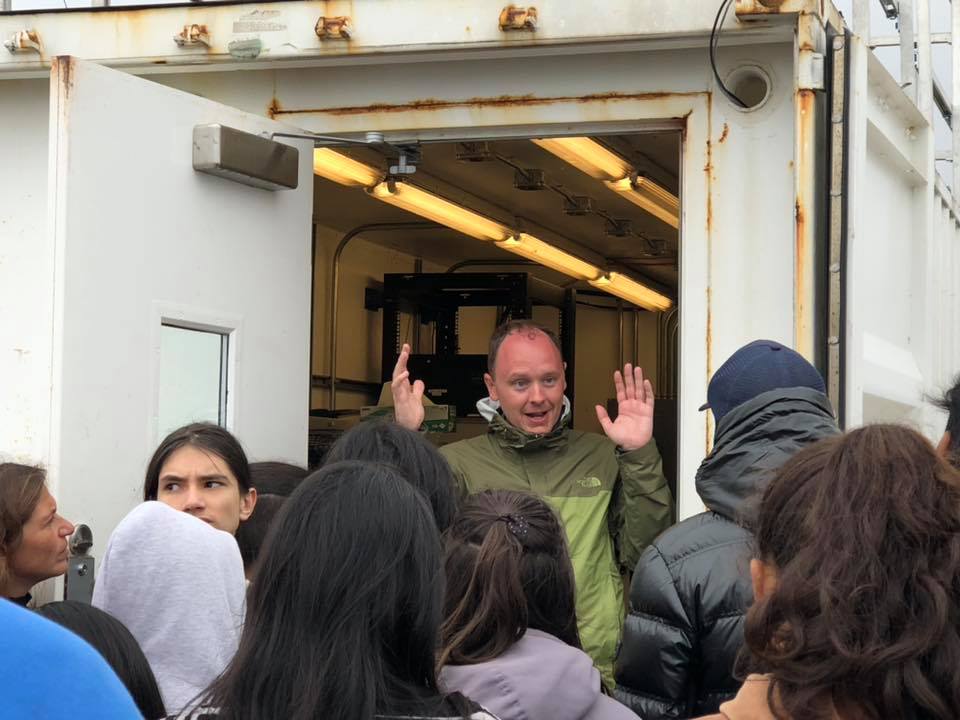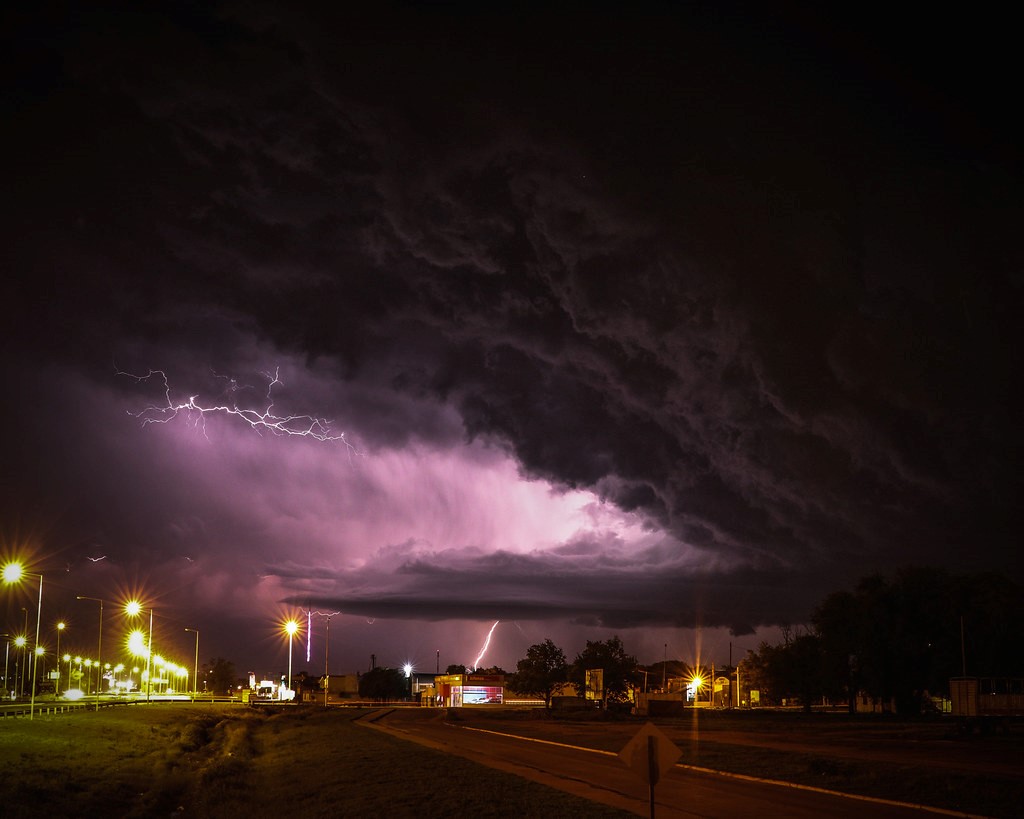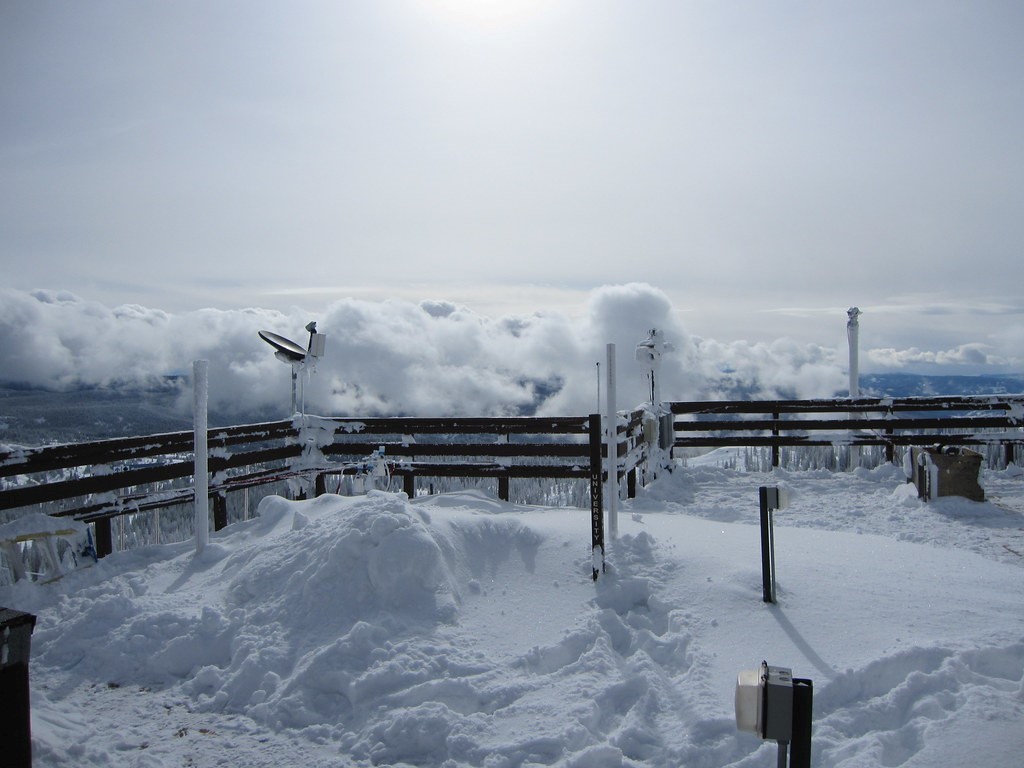UEC Profile: The Draw and Drama of Severe Storms
Published: 24 June 2019
One modeler/observationalist long ago fell in love with storms and is making something of it now
This is the sixth article in a series of 2019 profiles on members of the ARM User Executive Committee (UEC).

Adam Varble is an atmospheric scientist at Pacific Northwest National Laboratory (PNNL) in Richland, Washington. When he looks at clouds, Varble does not marvel at the puffy bunnies and dragons some of us see. He calculates how the clouds were formed, how they will grow, and even how cold the cloud tops are getting.
During his childhood in suburban Milwaukee, Wisconsin, Varble was an early and eager watcher of The Weather Channel—perhaps because weather often made a dramatic appearance in his hometown.
One night, a freak storm packing 100-plus mph winds took down a lot of trees in Franklin, the low-lying suburb in which he grew up. It was, he explains today, a “derecho” event—a long-lived, straight-line windstorm linked to a group of fast-moving thunderstorms.
Franklin also experienced regular floods. After the heaviest rains, Varble would head to the backyard with his father, carrying buckets for bailing.
“I thought that was great,” he says of his childhood’s heavy weather. “It was the drama of it all.”
Argentina Calls

To this day, severe weather still captivates Varble. In late April 2019, he wrapped up a seven-month field campaign in Argentina that explored the life cycle of large regional convective storms, including how they form, grow, and organize.
Cloud, Aerosol, and Complex Terrain Interactions (CACTI) was sponsored by the U.S. Department of Energy’s (DOE’s) Atmospheric Radiation Measurement (ARM) user facility.
As CACTI’s principal investigator, Varble oversaw an international team of 150 researchers who, off and on in late 2018 and early 2019, made observations and measurements in the Sierras de Córdoba mountain range, the acknowledged birthplace of possibly the largest thunderstorms in the world.
The timing was right. CACTI unfolded from the fall through the austral spring, when this normally arid region east of the Andes receives nearly all of its rainfall—about 700 millimeters (27.5 inches) in an average year.
The place was right too. ARM deployed a cluster of instruments at a carefully chosen site near Villa Yacanto, Argentina, on the eastern slopes of the mountain range. Scanning radars and an array of over 50 other instruments measured the properties in and around orographically generated clouds.
Often fed by moisture flowing southward from the Amazon basin, the clouds then interacted with airflows from the west that crossed the Andes.
Radiosondes, ARM’s now-retired Gulfstream-159 (G-1) research aircraft, and 1-minute-resolution satellite retrievals added to the richness of the CACTI data set. In all, CACTI created a treasure trove of measurements on cloud dynamics and microphysics, heat and energy cycles, the structure of atmospheric motions, surface conditions, and the properties of aerosols (tiny particles in the air).
CACTI’s Prickly Mission

North-central Argentina is a long way from Franklin, Wisconsin. But its storms are not so far from those Varble explored during doctoral studies at the University of Utah (PhD, 2013).
His main mentor there was Edward Zipser, who established in a landmark 2006 paper that the tallest, largest, and potentially strongest thunderstorms in the world occurred in northern Argentina, east of the Andean cordillera.
Such storms can be 20 kilometers (12.5 miles) high, with cloud shields thousands of kilometers wide.
Varble was hooked, and CACTI was a logical progression.
It was an intensive study of the growth of large regional storms that contribute most of the rainfall in many parts of the world—unique in its sampling of so many individual storms in a variety of environments.
Yet a refined sense of how the initiation, growth, propagation, and decay of these storms depend on environmental conditions remains missing. How such storms are represented in earth system models also remains relatively poor—partly a testament to our incomplete understanding.
It was these prickly gaps in knowledge that CACTI took on, with Varble in the lead.
Coincident with CACTI, and sharing much of the storm-study mission, was the Remote sensing of Electrification, Lightning, And Mesoscale/microscale Processes with Adaptive Ground Observations (RELAMPAGO) field campaign, sponsored primarily by the National Science Foundation.
Flash Cards, Physics, and Engineering
Varble was a kid when he took part in his first after-storm backyard bucket brigade with his father. Between that moment and confronting the science issues behind CACTI, a few things happened to steer him to the path he is on today.
To begin with, Varble grew up in a household where science, math, and engineering were dominant interests. (His father is an engineer who designs big cranes. His mother back then was a technical drafter.)
Besides cool storms to marvel at, he remembers sessions with math flash cards as a child and the years of public school in Franklin, where the teachers thought problem-solving and critical thinking were the order of the day.
In high school, physics stood out.
“It came naturally,” he said of the discipline that seemed to “organize the world. At the same time, I was interested in all things science, and still am.”
Along the way, Varble realized that the world beyond high school included weather researchers. However, at the University of Wisconsin, Madison (B.S., 2007), he majored in nuclear engineering for the first three years, and he also took courses in civil and mechanical engineering.
By his junior year, Varble was frustrated that problem sets in nuclear engineering never seemed to get definitively solved—and that “all the science you did was on things you didn’t see,” he says.
Everyone can see the weather, however, and Varble switched majors to atmospheric sciences.
“I was good at (nuclear engineering),” says Varble, “but not passionate.” He decided to leave it behind.
Chasing Storm Science

The switch to atmospheric sciences meant that Varble spent a fifth year as an undergraduate. But it brought him back to his boyhood fascination with the weather.
When he started doctoral studies at the University of Utah, “I was still interested in storms. That’s what drew me to Ed (Zipser),” says Varble of his mentor—a professor who was also “passionate about getting his students out into the field … (which) gives you perspective.”
In Utah he also discovered hiking, climbing, and other outdoor pursuits—partly through meeting his now-longtime girlfriend, Annie, a Utah native “who grew up camping,” he says.
Spending time outdoors “helps generate interesting science questions,” he says, especially in the Intermountain West, where steep terrain creates complicated cloud processes. “I would look at clouds, observing how they form and how they were changing.”
Right away, field campaigns were also part of his graduate-school picture.
Varble was a graduate student when he wrote a proposal with Zipser to study data from the 2011 Midlatitude Continental Convective Clouds Experiment (MC3E) at ARM’s Southern Great Plains (SGP) atmospheric observatory.
He served the MC3E field campaign as a forecaster—“a great one,” he says. “We nailed all those storms.”
‘You Don’t Forget’

Just a few months before MC3E, Varble volunteered during the 2010–2011 Storm Peak Lab Cloud Property Validation Experiment (STORMVEX). The DOE-ARM field campaign in snowbound Steamboat Springs, Colorado, emplaced a suite of instruments to study wintertime cloud properties.
“It was amazing,” says Varble—not only the science, but the heavy snow (more than 400 inches that season), the intense cold (routine wind chills of 30 degrees below zero), and the sheer outdoor challenge. “To some people it would be painful, but to me it was a thrill. You don’t forget something like this.”
His PhD dissertation used data from the Tropical Warm Pool-International Cloud Experiment (TWP-ICE), a 2006 ARM field campaign near Darwin, Australia. The international effort focused on airborne measurements of tropical cirrus clouds and the monsoon-generated convective forces that form them.
Varble’s dissertation focused on evaluating cloud models, simulating convective systems, and comparing them with observations from TWP-ICE.
It was his introduction, in a way, to what he calls himself now: “a rare hybrid” of modeler and observationalist—a practitioner of a two-bladed approach that one older colleague only half-jokingly told him was “the valley of death” in atmospheric sciences.
A New Voice for ARM Users
So far, the valley of death seems just the right thing for the cheerful Varble. He is energetically grappling with the onslaught of CACTI data while back in his office at PNNL, where he has worked since July 2018.
He is busy otherwise too. For one, in January 2019, Varble joined ARM’s User Executive Committee, the official advisory voice of the ARM data user community in interactions with ARM leadership.
“I can serve as an effective liaison between ARM users and management,” says Varble—in part because of a 10-year history with DOE entities. “I am familiar with their structure and operations, and have interacted with many ARM data users and product developers. I am a longtime user of many ARM datastreams and products related to atmospheric state, cloud properties, and aerosols.”
Since graduate school in 2008, Varble has been affiliated with ARM as well as DOE’s Atmospheric System Research (ASR) program.
In addition, he says, because of his recent experience orchestrating CACTI, “my knowledge of ARM operations and data flow has also expanded greatly.”
Writing, Reviewing, Advising
Varble is also associate editor of the journal Monthly Weather Review and a regular reviewer for more than 10 journals and research programs. His post-PhD years as a research professor at the University of Utah were devoted to writing research proposals and advising graduate students, two of whom joined him in Argentina.
From the beginning, Varble has also liked getting into the field. One departure from his computer monitors took him back to his dissertation topic, monsoon systems near Darwin, Australia—this time in person. He was part of the 2014 High Altitude Ice Crystals (HAIC)/High Ice Water Content (HIWC) flight campaign, an international effort focused on measuring and analyzing regions of high ice crystal concentrations.
The goal was to improve airline safety. Funders included Airbus, Boeing, NASA, the Federal Aviation Administration, and the European Union Aviation Safety Agency.
Varble, always eager for the open air and the chance of a storm, is still—in a way—carrying bailing buckets out to the backyard.
He says: “I love going on field campaigns.”
Keep up with the Atmospheric Observer
Updates on ARM news, events, and opportunities delivered to your inbox
ARM User Profile
ARM welcomes users from all institutions and nations. A free ARM user account is needed to access ARM data.


















